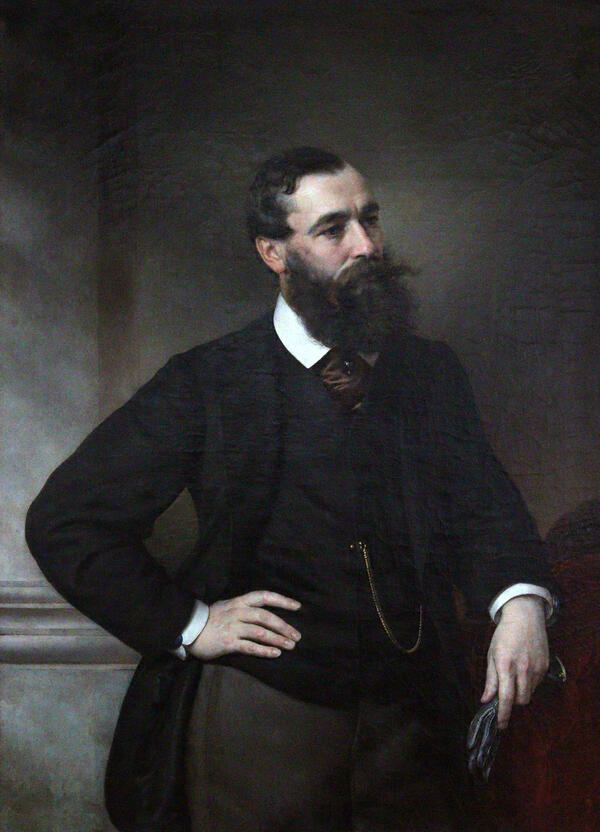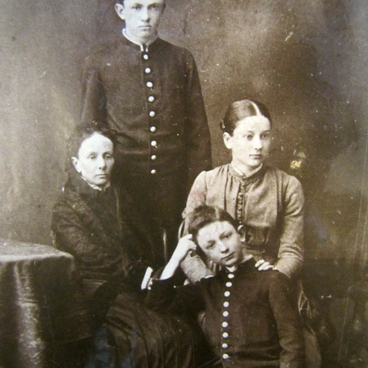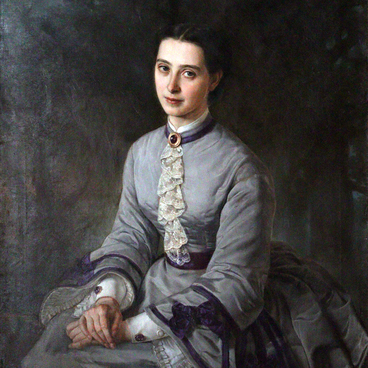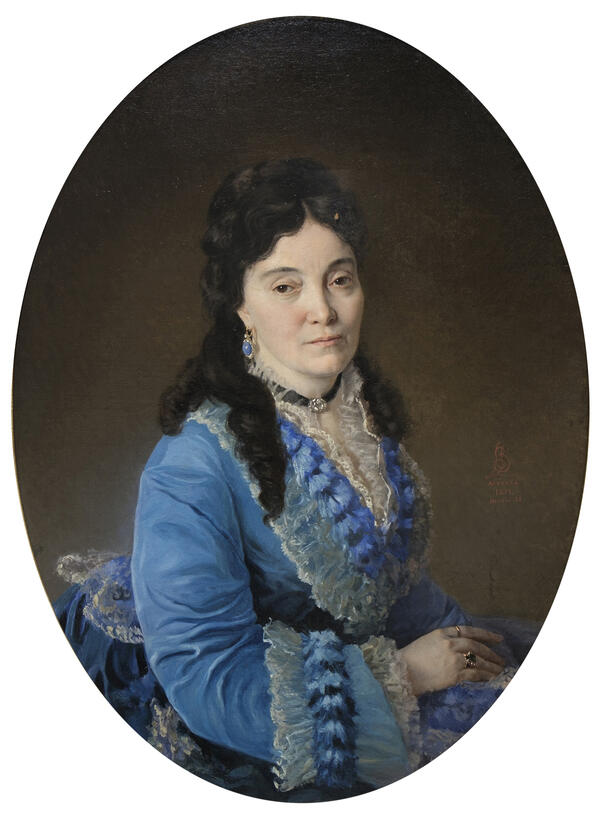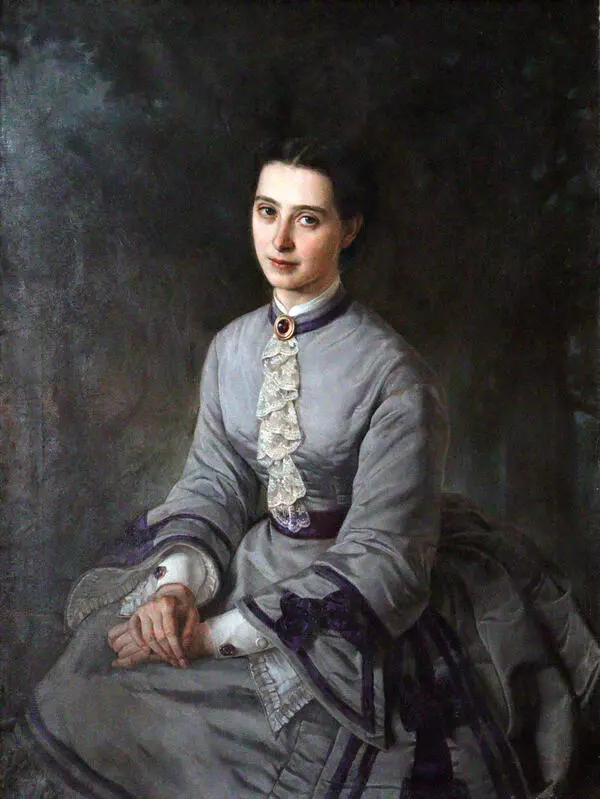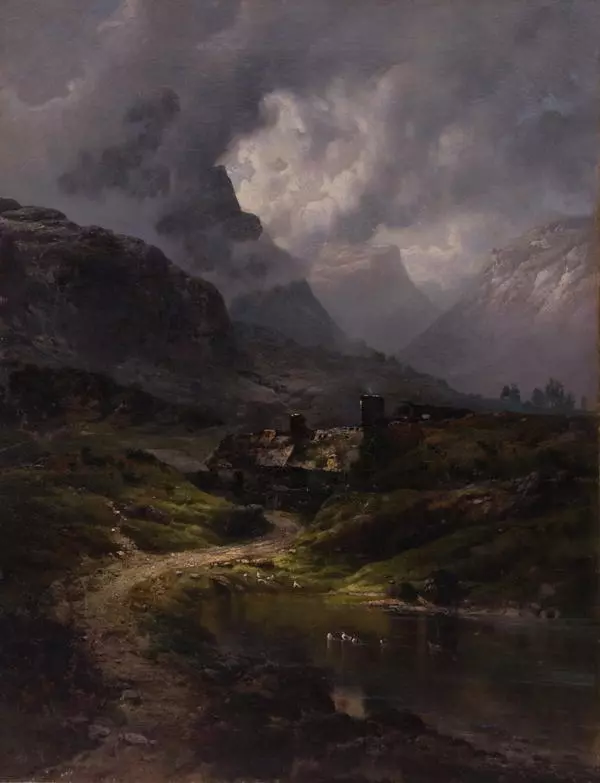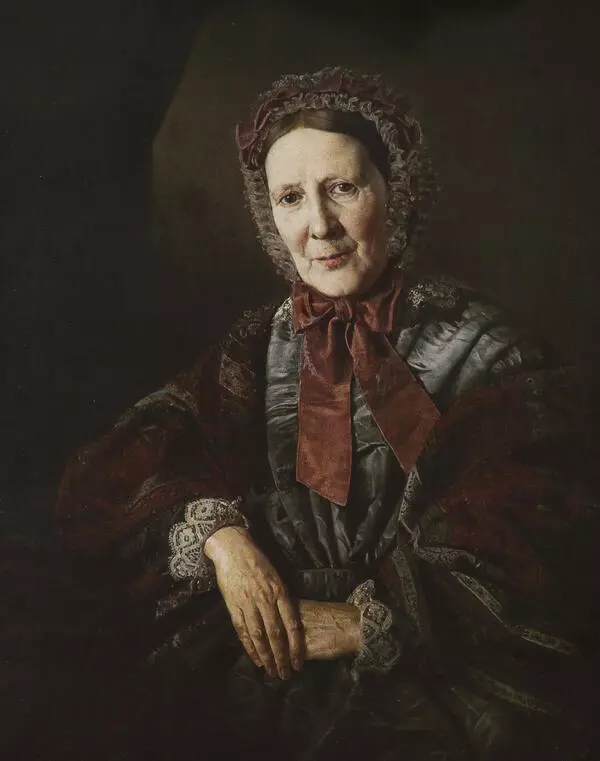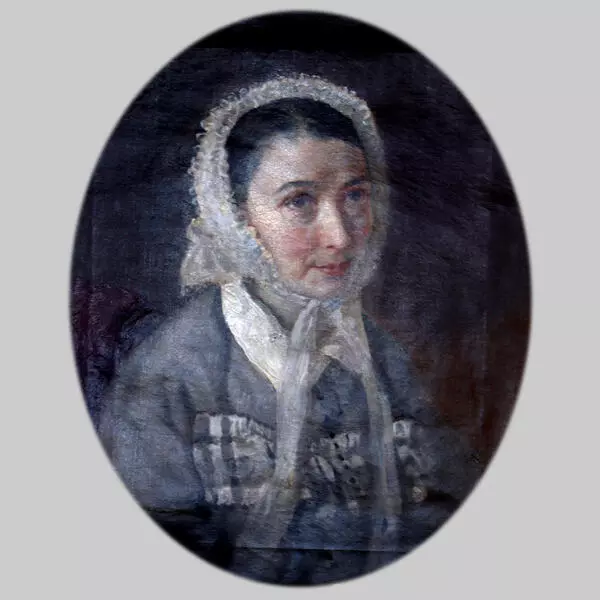Vladimir Sherwood was a Russian painter, architect, sculptor. He was born on August 30, 1832 in the village of Istleevo, Elatomsky district, Tambov province, where his father owned a cloth factory.
In 1838, the young man was left an orphan and was first brought up by his aunt, and then at the Moscow Orphan Landing School, where, among other subjects, he was taught architecture.
In 1848-1849, Vladimir Sherwood studied at the architectural school at the Moscow palace office, then at the Moscow School of Painting, Sculpture and Architecture, which he graduated in 1857 with the title of a freelance artist of landscape painting.
In 1860, Sherwood, whose grandfather was an Englishman, at the invitation of Charles Dickens went to England for five years to portray the Dickens family. There he created a large number of portraits and landscapes, ‘made attempts to create architectural projects.’
After returning to Russia, Vladimir Sherwood continued to paint. In 1868 for the painting ‘Conversation of Christ with Nicodemus’ the Petersburg Academy of Arts awarded him the title of a class artist of the third degree. The next year, for portraits transferred to the exhibition, he was appointed the artist of the first degree, and in 1872 Sherwood became an academician of painting.
In the picture, the author depicted the Russian lawyer, historian, publicist and public figure, Boris Chicherin. According to the tradition of ceremonial portraits, the scientist posed for Vladimir Sherwood against the background of a column. The model in the artist’s painting has a representative and secular appearance. Chicherin and Sherwood were brought together by many circumstances - interest in history, philosophy, theory of art, a common circle of acquaintances and a common small home area.
Boris Chicherin was born in Tambov on June 7, 1828. He received education at home. In 1849, he graduated from the Law Faculty of the Moscow University. In 1853, he presented his master’s thesis ‘Regional institutions of Russia in the 17th century.’ Because of the opposition of conservative historians, Chicherin defended it only three years later. In 1858, his ‘Experiments on the History of Russian Law’ and ‘Essays on England and France’ were published. The texts caused heated discussions and made the author famous.
Chicherin was a theoretician of the ‘state school’ in Russian historical science, which had a noticeable influence on all subsequent Russian historiography. In fact, he laid the foundation for Russian political science and became one of the founders of Russia’s constitutional law.
In 1838, the young man was left an orphan and was first brought up by his aunt, and then at the Moscow Orphan Landing School, where, among other subjects, he was taught architecture.
In 1848-1849, Vladimir Sherwood studied at the architectural school at the Moscow palace office, then at the Moscow School of Painting, Sculpture and Architecture, which he graduated in 1857 with the title of a freelance artist of landscape painting.
In 1860, Sherwood, whose grandfather was an Englishman, at the invitation of Charles Dickens went to England for five years to portray the Dickens family. There he created a large number of portraits and landscapes, ‘made attempts to create architectural projects.’
After returning to Russia, Vladimir Sherwood continued to paint. In 1868 for the painting ‘Conversation of Christ with Nicodemus’ the Petersburg Academy of Arts awarded him the title of a class artist of the third degree. The next year, for portraits transferred to the exhibition, he was appointed the artist of the first degree, and in 1872 Sherwood became an academician of painting.
In the picture, the author depicted the Russian lawyer, historian, publicist and public figure, Boris Chicherin. According to the tradition of ceremonial portraits, the scientist posed for Vladimir Sherwood against the background of a column. The model in the artist’s painting has a representative and secular appearance. Chicherin and Sherwood were brought together by many circumstances - interest in history, philosophy, theory of art, a common circle of acquaintances and a common small home area.
Boris Chicherin was born in Tambov on June 7, 1828. He received education at home. In 1849, he graduated from the Law Faculty of the Moscow University. In 1853, he presented his master’s thesis ‘Regional institutions of Russia in the 17th century.’ Because of the opposition of conservative historians, Chicherin defended it only three years later. In 1858, his ‘Experiments on the History of Russian Law’ and ‘Essays on England and France’ were published. The texts caused heated discussions and made the author famous.
Chicherin was a theoretician of the ‘state school’ in Russian historical science, which had a noticeable influence on all subsequent Russian historiography. In fact, he laid the foundation for Russian political science and became one of the founders of Russia’s constitutional law.

